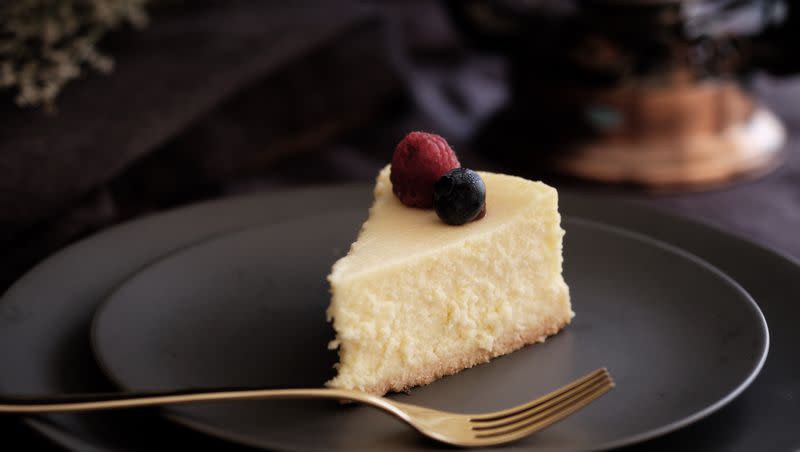The secrets to making the perfect cheesecake

A classic New York style cheesecake has a dense, smooth and rich filling with a luxurious, buttery graham cracker or cookie crust. Achieving just the right texture and avoiding any lumps in the filling can be a difficult task.
Cheesecake has a tendency to sink in the middle or crack across the top if the right process isn’t followed.
So, what are the secrets to the perfect New York style cheesecake?
It first starts with the ingredients.
Related
What ingredients do you need for cheesecake?
The basic ingredients for cheesecake can be divided into two parts: filling and crust.
Crust: You can make either a graham cracker crust or a cookie crust for your cheesecake. It depends on what you like best. For a simple graham cracker crust, you will need graham crackers, butter and sugar, according to Sally’s Baking Addiction.
You could also opt for a cookie crust with flour, sugar, salt, unsalted butter and an egg like the King Arthur Baking Company recipe calls for.
Filling: As for the creamy, rich filling, you will need cream cheese, sugar, lemon, vanilla extract, sour cream, salt and flour. It’s important to have the lemon in order for the cheesecake to be truly New York style.
Toppings (optional): You can do any topping you’d like. Fruit like cherries or strawberries is a popular choice. You could also try chocolate shavings, whipped cream, chopped nuts, caramel drizzle, crushed candies, lemon curd or crushed chocolate pretzels.
To achieve the best results for your cheesecake, it’s best to keep the ingredients at room temperature. If you mix cold butter, eggs, sour cream and cream cheese with room temperature sugar, the ingredients will not combine as smoothly as they could if they were all room temperature. According to The Spruce Eats, having cream cheese that’s too cold may result in a cheesecake with lumps.
“When at room temperature, eggs, butter, and other dairy ingredients form an emulsion which traps air,” per Sally’s Baking Addiction. “While baking in the oven, that trapped air expands and produces a fluffy baked good.”
How to mix cheesecake batter
One of the difficult aspects of making a cheesecake is mixing the batter so that it does not have lumps. You can run into the problem of potentially over-mixing.
“Mix the batter until the ingredients are thoroughly incorporated, and not any longer. Over-beating does not improve the texture and make the cheesecake creamier; instead, it whips too much air into batter causing the cake to puff up (similar to a souffle), then sink, shrink, and crack,” per Southern Living.
Do you really need a water bath?
While you can technically make a cheesecake without a water bath, it’s better to use one to avoid cracks in the cake.
“Technically, cheesecake is not cake. It’s a custard on a graham cracker crust. Custards do best when you cook them low and slow, which a water bath helps to achieve,” according to Simply Recipes.
A water bath helps keep your cheesecake moist as it cooks. Sally’s Baking Addiction provides instructions for making a water bath. In simple terms, you need to wrap the bottom of your springform pan in aluminum foil, put your pan inside a roasting pan and add water so it comes up around an inch alongside the springform pan.
Cooling the cheesecake
After you bake the cheesecake, you do need to chill it, so that the filling can set, according to The Kitchn. “When cooling, do it gradually. Let the cheesecake sit in the turned-off oven with the door cracked for about an hour, then remove it from the water bath and let it cool completely on the stovetop.”
After letting the cheesecake cool, it needs to be refrigerated. Advice from University of Wyoming instructs to let the cheesecake cool for four hours or overnight. Once the cheesecake is fully cooled, then, it’s ready to serve.
